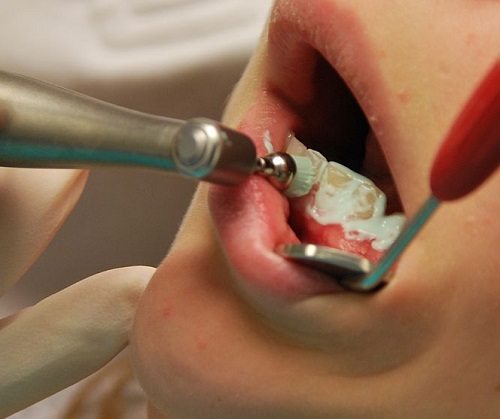
November 12, 2013;Stateline
One of the less publicized but highly admirable efforts of U.S. foundations have been programs aimed at providing dental treatment to underserved populations. The Kellogg Foundation has long been at this, supporting mobile dental vans to reach rural populations and supporting new dental workforce models. In collaboration with the Rasmuson Foundation, Kellogg has been working to train dental health aide therapists for Alaskan communities. To reach more people in need, Kellogg has been supporting efforts such as the Kansas Dental Project’s advocacy of training and allowing dental hygienists to provide “mid-level” services such as temporary fillings and tooth extractions in addition to typical hygienist work such as cleanings, stridently opposed by dentists’ trade associations.
Dental care may be important for you and your kids, but is somehow not important enough to be included, except for children, in the Affordable Care Act. Plenty of Americans, adults and children both, currently have limited or no insurance coverage for their dental needs. The Kaiser Family Foundation reports that nearly three-fourths of adults under 65 do not have dental coverage at all. Despite the availability of Medicaid, adults who qualify for Medicaid have do not get any dental coverage in eight states and coverage only for dental emergencies in 17 other states. Maybe it is because the American public doesn’t see dental health as a significant health issue, even though the American Dental Association reports that dental-related visits to hospital emergency rooms nearly doubled from 1.1 million visits in 2000 to 2.1 million visits in 2010.
Sign up for our free newsletters
Subscribe to NPQ's newsletters to have our top stories delivered directly to your inbox.
By signing up, you agree to our privacy policy and terms of use, and to receive messages from NPQ and our partners.
Poor oral health has been linked to any number of health issues beyond the condition of your teeth—heart conditions, breathing, blood sugar, Alzheimer’s and dementia, and even difficulties having a baby. That’s the preventative side of dental care, but even more serious aspects of inadequate dental care are epitomized by the case of 12-year-old Deamonte Driver in Baltimore in 2007, whose untreated infected tooth led to brain infection and eventually death. The infected tooth could have been removed in an $80 procedure, compared to the expenditure of $250,000 in medical procedures and hospital care that Deamonte received but still failed to save his life.
The ACA doesn’t cover adult dental care, but promised pediatric dental care would be an “essential benefit” in insurance policies purchased on the health exchanges, though on a slower timetable than other health benefits. Nonetheless, that was still seen as a major advance by children’s health advocates. However, under the ACA, states have leeway in determining which dental services will be covered and what deductibles and co-payments will be required. Stateline’s Michael Ollove reports that in Utah, for example, exchange-approved insurance policies will cover dental cleanings and sealants for children, but not restorative work such as fillings for cavities. The state’s rationale for not covering fillings is, according to state representative Jim Dunnigan, is twofold: to limit pressure that the ACA is purportedly putting on premiums due to mandating additional benefits, and to allow consumers the choice of adding dental coverage by buying supplemental insurance, instead of making dental coverage mandatory.
Ollove says that states have two options for responding to the ACA pediatric dental care mandate, either adding dental coverage to overall health policies available on the exchanges or offering separate stand-alone dental policies. But in states opting for stand-alone policies, parents aren’t required to buy them. Purchasers of stand-alone dental plans won’t be eligible for federal tax credits like they would regarding overall health insurance plans on the exchanges, and stand-alone plans won’t come with the kinds of consumer protections for denials of claims that are part of the overall health plans. None of this addresses the problem that Kellogg, Rasmuson, and other foundations have been tackling—the “adequate” availability of dentists, which the ACA allows the states to determine as they see fit.
The anomaly is that the ACA mandates pediatric dental benefits as “essential,” but essential doesn’t mean mandatory. And none of this addresses the dental health needs of adults. Dental coverage counts. Anyone who has tried to get coverage under most dental insurance packages knows how limited they are. How did the ACA give dental such weak coverage?—Rick Cohen













